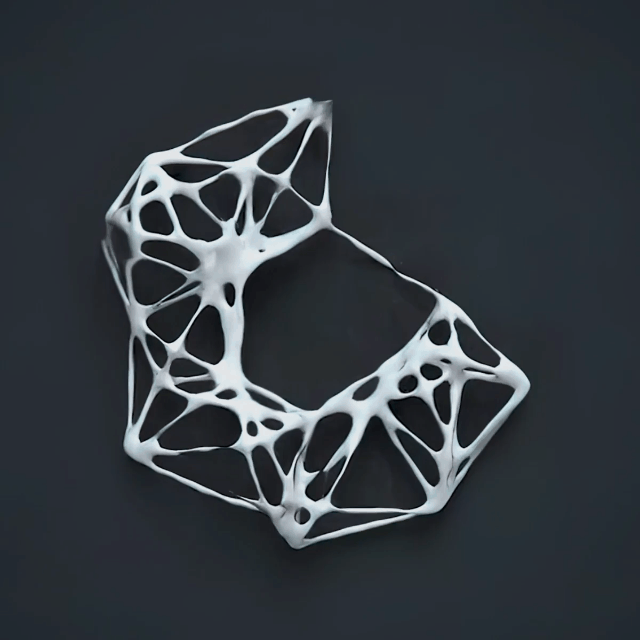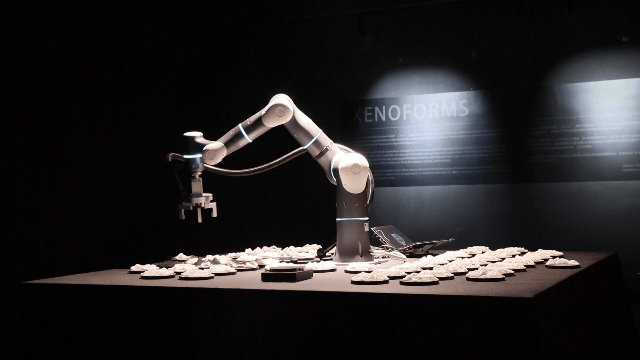
Avant Garde Art Installation Xenoforms
Overview
In the avant-garde art installation "Xenoforms" exhibited in 2022, Professor Stavros Didakis of New York University employed the adaptive robot Rizon 10 as the "protagonist" to demonstrate how robots autonomously observe and explore inorganic entities generated by artificial intelligence.
The work depicts how cutting-edge technology, especially computer technology, follows its strategies to colonize architectural spaces and evolve into a symbiotic entity with humans.
Case Introduction
Case Study Customer
Stavros Didakis, Greek Media Artist, and Professor at New York University
"Xeno" originates from the Greek word ξ νο, meaning "foreign, alien", referring to organisms or artificial organisms that invade the local host's ecological environment. In "Xenoforms", they are entities generated through 3D printing with randomly AI-generated models.

Rizon 10 randomly patrols these Xenos, then selects, grasps and places them, observing them like a laboratory researcher. After the observation, the Xeno is returned to its original position, and Rizon 10 continues the next round of search.
Technical Features
1. "Xenoforms" fully utilizes the design features and technical capabilities of the adaptive robot Rizon 10. The deep gray aluminum alloy surface creates a futuristic feeling that matches the installation theme, while its rigorous and modern design language provokes more thoughts on the fusion of humanities and technology.
2. With seven degrees of freedom, Rizon 10 can achieve a patrol range as wide as a human arm, while advanced force control ensures the arm's smooth movement and flexible grasping motions, which makes the robot more 'human-like' without damaging objects.

As an academic, researcher, and artist, Professor Stavros's work focuses primarily on technological futures with a particular emphasis on architectural augmentation, sensorial interfaces and technological frameworks as extensions of human environments.
He stated: ‘Collaborating with Flexiv was a great experience. Flexiv's engineers helped optimize various algorithms, allowing me to fully control the robot and make sure its movements were as natural as possible. In terms of design, size, and functionality, Rizon 10 is very suitable, and it can handle the complexity of this project.'




